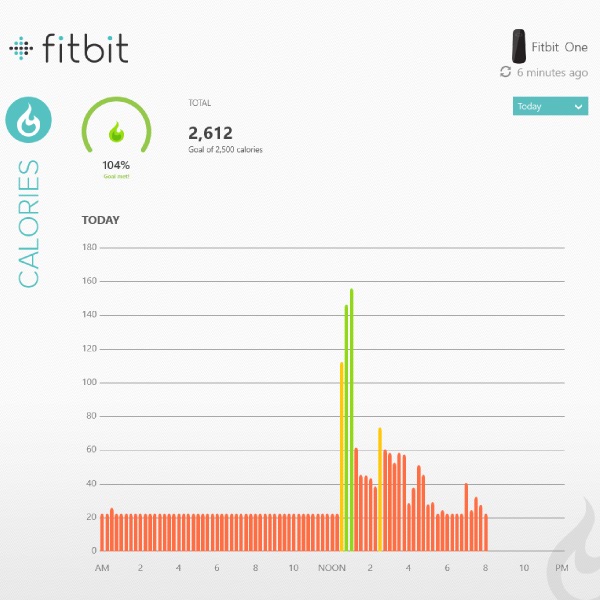
In December I got a Fitbit One activity tracker, and I have been using it with my Surface every day since.
So far, I have been really enjoying reviewing the extra information I have been collecting. While I am certainly not the most athletic, like most people I want to keep fit and knowing how I’m doing certainly helps.
By either keeping the Fitbit in my pocket or attached to my belt, I’m able to keep track of the following statistics:
- Steps
- Calories Burned
- Distance
- Very Active Minutes
- Floors
The device itself is small and nice in the hand, but people have noted to me how easy it would be to lose. At the time of writing, I have only forgotten to clip it to my jeans once – and I quickly remembered to get it before I went too far.
With iOS and Android the Fitbit One can talk directly to the phone via Bluetooth. On Windows, the device synchronises with the Fitbit service through a USB dongle and some software, though this may be improving through the Windows 8 app. Currently, there’s no Windows Phone software but the rumours are that it will be coming soon.

At this time of year it’s quite difficult to do extra exercise, so I’ve actually reduced the default goals which means that with an extra walk every day I’m meeting the goals. With the original 10,000 steps, I’d have to walk around my village twice. While that goal seems reasonable for the future, I figured I’d start off slow.
I spent a lot of time looking around at the various options before deciding to go with Fitbit. There biggest factor was the fact that it synchronises with Microsoft HealthVault – a service that I already use to keep track of my weight and diet intake.
I decided to go for the clip-on style tracker for now, because I would rather wait and see what else could be put on my wrist before giving up my G-Shock. Though I believe that ultimately, using the wrist would be more useful than a clip-on – especially when used sleep tracking.
Hopefully Microsoft will produce a watch based device that will work with activity tracking as will as more general things – half way between a Galaxy Gear and a Fitbit Force. I’ve always been super interested in wearable form factors, and as a Windows user I look forward to seeing what Microsoft bring. Currently, I wouldn’t be willing to use my wrist for something as simple as health tracking.
Update
A couple of weeks after posting this I managed to lose my Fitbit One while on a walk, and I was unable to find it even after spending a few hours retracing my steps.
Immediately I realised how important tracking my activity had become and decided to purchase a replacement. I have learned a lesson to ensure that I have secured the Fitbit One in my pocket rather than my belt when doing any real strenuous activities.
But this also goes to show that the Fitbit One is so useful, I’m willing to spend the £70 on a replacement right away.